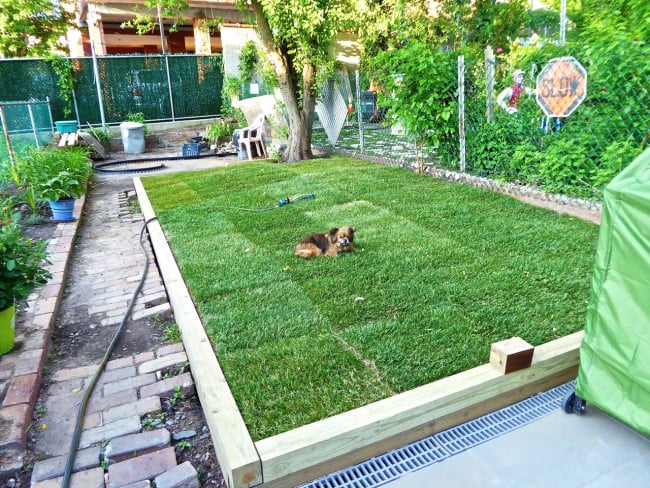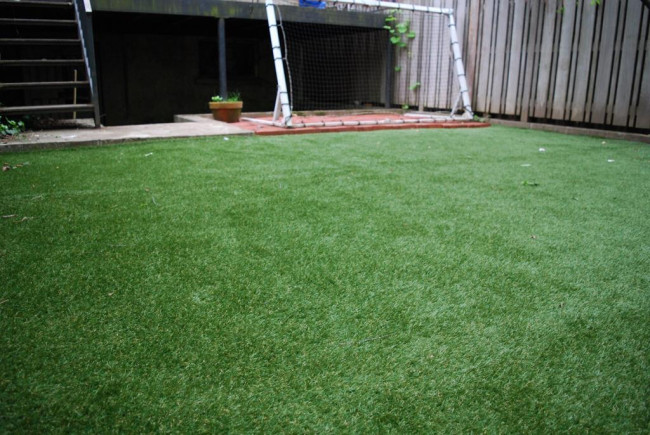Update from the field: Success for our NYC grow-a-lawn-from-seed experiment
A seed mat helped retain moisture and provide protection from birds.
All photos by Mimi O'Connor
In April I embarked on a project to grow a lawn from seed in the small yard in front of our Brooklyn house. I consulted an expert, made an effort to buy the right supplies, and prep the area well enough (meaning I put in some work but didn't get obsessive about it).
My plan inspired a NYC green lawn competition at Brick Underground's office: You can read how senior writer Emily Myers installed a faux turf in her rental's backyard with impressive results.
While that route obviously produces a lawn much quicker than growing grass from seed, my early results were still promising, if a bit hard to see.
What a difference a couple months makes
Now it's the dog days of summer and here's the upshot: The lawn has filled in and is doing great! Below, an image from the first week of June.
Even by late May, it had already required a trim. (It's shown here right after it's been cut.)
Tips & tricks
I'm quite happy with the results, and have learned a few things along the way. Here they are:
As Daniel Hunter, president of Trillium Landscape Design suggested, I didn't need to be extra precious with my nascent lawn. Did I water it to keep things damp? Yes. Was the soil perfectly and consistently moist during that early growing period? No.
When the lawn was starting to grow, as Hunter also advised, I went back and seeded some patchy areas that then filled in and caught up just fine.
I have no way of knowing how successful or not my lawn would have been if I hadn't used the Netless Seed Mat that I bought on a whim, but I'm convinced it helped things get off to a good start. (Birds did like to hang out and snack, and I think the mat offered a bit of protection.)
I seeded the whole front area, a section of which did have some existing grass. The seed I bought was a mix for sun and shade, containing different types of bluegrass, ryegrass, and red fescue, and the growth from that seed does look different from the previously seeded area, which is growing grass with a slightly a finer blade. It's also an area that gets less sun, so that might be a factor.
I've fertilized once, with a fertilizer intended to promote strong, early root growth.
I've watered. Again, not obsessively, but after a string of long, dry summer days, I'll put out the sprinkler for 20 minutes or so. (Or, at least I did until my excellent sprinkler was stolen from our front yard. Thanks, Brooklyn.) I try to water in the morning or evening.
I used to mow the lame lawn we had with an old-timey push mower the former owner had left behind. It was a miserable, sweaty task. This year, I bought a battery-powered weed whacker that has been a complete game-changer and worth every penny. I can do the whole lawn in 10 minutes, and it's actually very fun and satisfying.
The truth is, the grass grows faster than I can keep up. Realistically, to keep it looking tidy at all times, I'd have to cut it once a week.
Some say grass provides a nice place for mosquitos to collect and breed. (My colleague Emily says her turf doesn't have that problem so she gets points for that.) So far, I haven't experienced a noticeable increase in mosquito activity. For what it's worth, I do spread anti-mosquito "bits" to try to control the population.
You Might Also Like

























